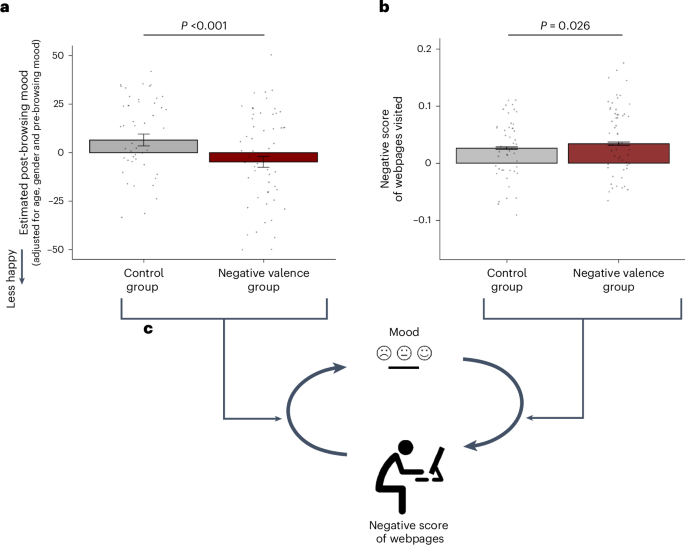The studies presented appear to be part of a larger body of work investigating the impact of online content on human emotions and behavior. Here's a brief overview of each study:

Study 1
- Objective: To assess the effect of positive, negative, and neutral webpages on user emotion.
- Design: Participants were shown three Google search results pages with one positive, one negative, and one neutral webpage. They chose one result to browse for 90 seconds. After browsing, they indicated their mood on a scale from 'very unhappy' to 'very happy'.
- Results: The study found that participants who viewed the positive webpage rated as "more emotional" but this was not correlated with improved mood.
- Conclusion: None stated
Study 4a
- Objective: To investigate the impact of labeling search results as "feeling better" or "feeling worse".
- Design: Participants were shown three search results pages and chose one to browse for 90 seconds. Some participants viewed labels indicating which webpage made them feel better or worse (label condition), while others did not (no-label condition).
- Results: The study found that, compared to the no-label group, participants in the label condition tended to choose more positive labeled webpages.
- Conclusion: None stated
Study 4b
- Objective: To examine the effects of different webpage choices (positive, neutral, or negative) on user mood in a larger sample.
- Design: Participants completed six browsing trials with three search result options for each trial (positive, neutral, and negative). Mood ratings were collected at the end of each trial.
- Results: The study found that participants who chose positive webpages rated as having improved mood, while those selecting more negative content did not.
Overall Implications
These studies collectively suggest that online content can have significant effects on human emotions and behavior. Positive content appears to elicit stronger emotional responses than neutral or negative content, though this does not necessarily translate to improvements in overall mood
However, the results of these individual studies should be considered small-scale and more research would be necessary to determine if they would generalize across different populations.
Additionally, there might be variations in the specific effects depending on other factors like topic selection (which was random), webpage quality (not described in the summaries) or personal differences (though not evaluated in this study design).
More broadly, these studies suggest that developers, policymakers and content creators may benefit from understanding how online content influences user behavior, to inform development of more supportive and inclusive online environments.
